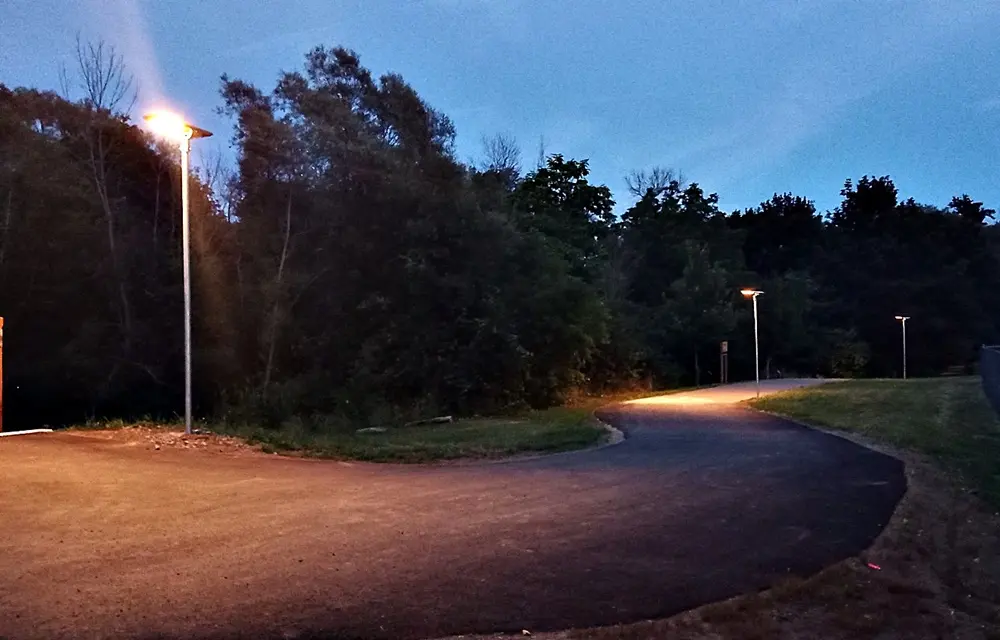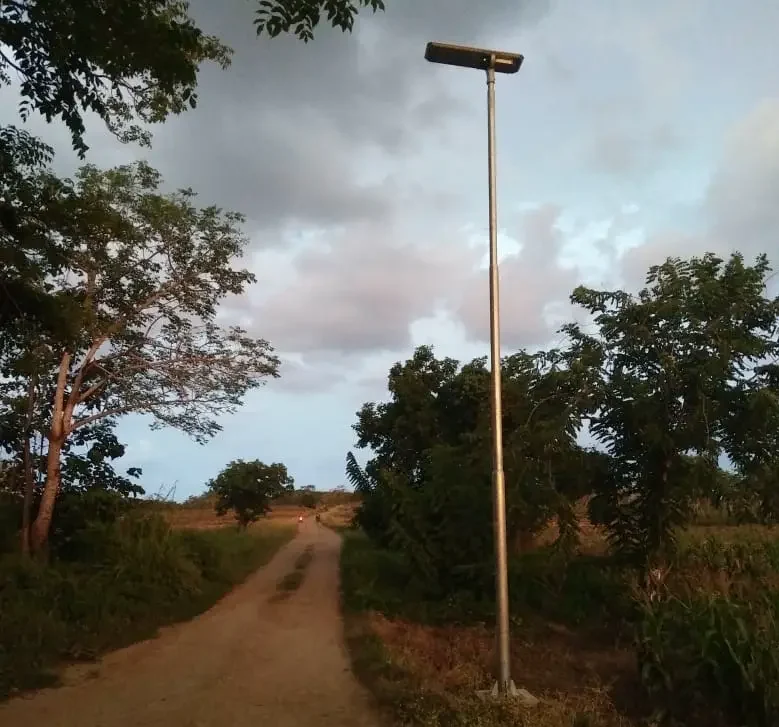With the ongoing development of rural construction, the significance of rural road lighting is becoming increasingly prominent. High-quality road lighting not only enhances the safety of nighttime driving but also improves the quality of life for residents and fosters the prosperity of the rural night economy. This paper aims to delve into the principles of rural road lighting design, key points, and the application of intelligent lighting systems to provide comprehensive and detailed solutions for rural road lighting.

The Principles of Lighting Design
In rural road lighting design, safety, uniformity, economy, and energy conservation and environmental protection are the four major principles that must be adhered to.
Safety: The primary goal of rural road lighting design is to ensure the safety of nighttime driving. Through the rational arrangement of lamps and brightness settings, lighting should cover the entire road surface, improving the visibility of nighttime traffic and pedestrians, and effectively reducing the risk of traffic accidents.
Uniformity: To ensure the comfort of night driving, rural road lighting design must ensure the uniformity of road lighting. It is important to avoid areas that are too bright or too dark, allowing drivers and pedestrians to clearly see the road ahead.
Economy: While meeting lighting needs, rural road lighting design should focus on cost-effectiveness. Selecting lighting equipment and lamps that offer value for money reduces construction and maintenance costs, ensuring the lighting system can continuously provide stable illumination for rural roads.
Energy Conservation and Environmental Protection: Rural road lighting design should prioritize energy-saving lamps and high-efficiency light sources to reduce energy consumption and carbon emissions. Additionally, making full use of renewable energy sources like solar power is crucial for achieving an energy-efficient and environmentally friendly lighting system.
The Key Points of Lighting Design
Lamp Selection and Arrangement: In rural road lighting design, the selection and arrangement of lamps are key. Based on the characteristics of rural roads, appropriate types of lamps, such as solar street lights, should be chosen. Solar street lights offer high efficiency, energy savings, and a long lifespan, making them suitable for rural road lighting. The arrangement of lamps should be based on road width, traffic flow, and pedestrian flow to ensure uniform road lighting.
Lighting Brightness and Uniformity: The brightness and uniformity of rural road lighting directly affect the safety and comfort of nighttime driving. Generally, the lighting brightness on main roads should not be less than 20 lux (lx), with secondary roads and side roads having appropriately reduced brightness. It is necessary to ensure even distribution of roadway lighting to avoid areas of excessive brightness or darkness. Lighting uniformity can be achieved by adjusting the installation angles and heights of solar street lights.
Energy Conservation and Environmental Protection Measures: In rural road lighting design, these measures are indispensable. Utilizing energy-saving lamps is an effective way to reduce energy consumption. High-efficiency, energy-saving lamps like solar street lights provide stable and even lighting effects while also reducing energy use and carbon emissions. Moreover, fully harnessing renewable energy sources such as solar power is an important pathway to energy conservation and environmental protection. During the day or in periods of good light, intelligent control systems can reduce lighting brightness or turn off some luminaires; where conditions permit, solar street lights can be introduced as the primary lighting equipment.
Maintenance and Management: The long-term stable operation of the rural road lighting system requires a robust maintenance and management mechanism. Solar street lights should be regularly inspected, maintained, and cleaned to ensure normal operation and efficient illumination. Training for maintenance personnel is necessary to improve their skills and efficiency. Establishing a fault reporting and maintenance response mechanism ensures that street lights can be repaired promptly in the event of failure.
The Application of Intelligent Lighting Systems
With the advancement of science and technology, intelligent lighting systems have been widely implemented in rural road lighting design. These systems enhance lighting efficiency and management levels through intelligent control, video monitoring, and data analysis. Specifically, smart lighting systems can achieve the following functions:
Remote Monitoring and Control: Solar street lights can be remotely monitored and controlled through mobile apps or central control systems, providing real-time insights into their operation and lighting effects. Managers can monitor and optimize street light performance from anywhere at any time.
Precise Control of Lighting Brightness and Switching Times: The intelligent lighting system can automatically adjust lighting brightness and switching times based on road usage and time changes, ensuring precise control and energy savings. For instance, during late-night hours or periods of low traffic, the system can reduce brightness or turn off some lamps to conserve energy.
Data Analysis and Decision Support: The intelligent lighting system can collect and analyze operational data from street lights to inform decisions and optimize lighting schemes, thereby improving efficiency. Data analysis provides insights into energy consumption, failure rates, and other information, offering a basis for future maintenance and upgrades.
Case Study: Successful Practice of Rural Road Lighting Solutions
To better illustrate the practical application of rural road lighting solutions, several successful cases have been selected for detailed analysis.
Case 1: Solar Street Light Transformation in Rural Brazil.

In rural Brazil, sresky company implemented a solar street light transformation project. Previously reliant on traditional, energy-intensive lighting, sresky’s solar street lights offered a significant improvement in brightness and a reduction in energy consumption of about 50%. The low maintenance costs of solar street lights have also alleviated the financial burden on local governments.
Case 2: Solar Street Light Application in Indonesia’s Countryside.

With unstable power supplies in many rural areas, sresky provided solar street light solutions that utilize the region’s abundant solar energy, effectively addressing power supply issues. The installed solar street lights ensure stable and durable night lighting, functioning normally even in adverse weather conditions and enhancing nighttime travel safety for local residents.
Case 3: Solar Street Light Project on Rural Roads in Myanmar.

In rural Myanmar, sresky initiated a solar street light installation project where effective nighttime lighting was previously lacking. The installation of sresky’s solar street lights improved road lighting quality and incorporated intelligent control systems for remote monitoring and brightness adjustment, optimizing energy usage and enhancing the intelligent and energy-efficient performance of the lighting system.
Future Prospects
As technology and society continue to evolve, rural road lighting solutions will face new opportunities and challenges. Development trends include technological innovation with more efficient and environmentally friendly lighting equipment, intelligent system upgrades integrating the Internet of Things and big data, a focus on green sustainable development, and humanized care that balances night driving safety with aesthetic and comfortable environments.
The rural road lighting solution is a vital measure for enhancing rural development and resident quality of life. Through rational design, meticulous construction, and scientific management, a safe, comfortable, energy-saving nighttime travel environment can be created, further improving living conditions for rural residents. With ongoing advancements in technology and societal progress, the rural road lighting sector is poised to reach new heights through innovation and development opportunities.